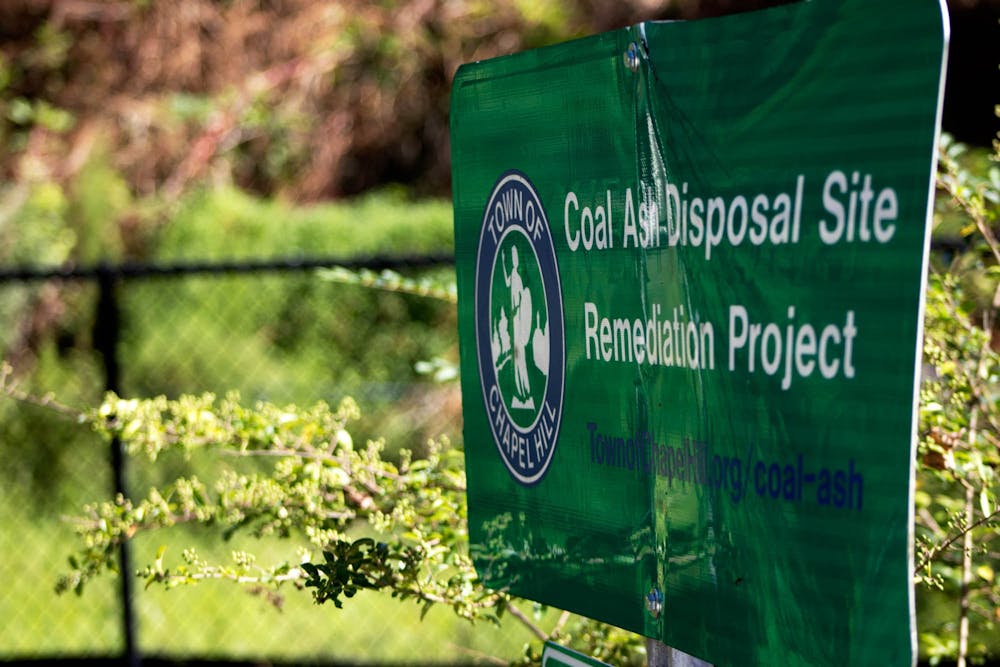Despite elevated rates of different types of cancer in specific areas, there are no officially proven cancer clusters in North Carolina.
Coal ash in N.C. and the U.S.
Coal ash, which primarily comes from the burning of coal in power plants, contains contaminants such as mercury, cadmium and arsenic, according to the EPA.
Inorganic arsenic is a confirmed carcinogen, according to the World Health Organization. Exposure to mercury — even in small amounts — may have a toxic effect on many different organs and bodily functions.
Without proper management, these chemicals can pollute air, waterways, groundwater and drinking water.
Rebecca Fry, a professor in the Department of Environmental Sciences and Engineering at the UNC Gillings School of Global Public Health, said no amount of arsenic is good for humans.
Fry, whose career has been devoted to protecting populations from toxic metals, added there needs to be more research on the subject of coal ash.
Since the chemicals in coal ash can occur naturally, she said further testing can be complicated.
In order to determine a link to coal ash-derived chemicals as opposed to naturally occurring chemicals, she said special scientific processes, like using tracers, must be implemented.
"I think many, many studies haven't done that," Fry said.
But coal ash — and the contaminants inside it — aren't just limited to North Carolina.
Kristina Zierold, an associate professor at the University of Alabama at Birmingham, said she conducted a pilot study in Louisville, Ky., to investigate the health of children living near two power plants.
To get the day's news and headlines in your inbox each morning, sign up for our email newsletters.
Because the study used a cross-sectional study design, it did not prove the stations caused any adverse health effects, Zierold said.
However, she said the study did find associations between exposure to fly ash — an airborne component of coal ash — and behavioral phenomena, such as depression and anxiety in children aged four to 17.
She added many community members in her area have suggested looking into how coal ash is affecting older people, as well.
"A lot of the adults in my community said, 'Oh, you need to do a cancer study because this person has breast cancer, this person has breast cancer and I know three other people that have breast cancer," she said.
Zierold said these adults also lived near coal ash locations.
"The things I heard from other community members were similar to other stories and case studies — what they hear from other people who are exposed to coal ash," she said.
In 2019, the North Carolina Department of Environmental Quality ordered Duke Energy to excavate six remaining coal ash sites in the state. The DEQ determined excavation was the only option to fulfill the requirements of the 2014 Coal Ash Management Act.
Coal ash in Chapel Hill
Locally, the Town of Chapel Hill adopted a Memorandum of Understanding in April with construction company Belmont Sayre for the redevelopment of 828 Martin Luther King Jr. Blvd.
The Town purchased the property in the 1980s, using the site to build the Chapel Hill Police Department.
In 2013, coal ash was discovered on the site, presumably built above construction debris. Remedial investigation reports began that same year.
In 2019, the property was determined eligible for the Brownfields Program by the state's DEQ. The program helps to redevelop abandoned or underused property hindered by real or perceived environmental contamination.
According to the development's website, 828 Martin Luther King Jr. Blvd. was previously managed by a private facility prior to the Town's acquisition. Because of this, the Town has no sources directly indicating where the coal ash may have come from.
Chapel Hill Town Council member Adam Searing said the more he learned about the development project, the more he became concerned that the Town was making a big mistake.
"Building housing, especially housing that was meant to be more affordable for lower-income families and kids, could have very serious health repercussions, especially for the kids who would eventually live on that site," he said.
Searing said the coal ash presumably came from the UNC Cogeneration Facility before the property was purchased by the Town. The coal-firing plant, located at 501 W Cameron Ave., was and still is a large producer of coal ash.
He added that he would be fine with building housing on the property, but would like to see the coal ash removed first.
"If you look around the country, no one else, no other community, is building housing on top of coal ash,” Searing said. “Covered with dirt or not.”
@sam_long16
@DTHCityState | city@dailytarheel.com




